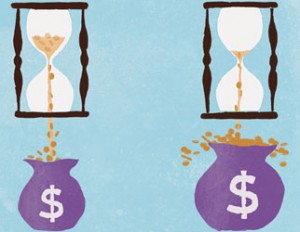Longer life expectancies affect both DB and DC pension plan holders
The good news is that pensioners are living longer. The bad news is that this comes at a price and someone has to pay. Does your financial situation need revisions based on life expectancy?
 The Canadian Institute of Actuaries (CIA) recently modified their pensioner mortality tables to reflect the longer lives of Canadians (see chart below).
The Canadian Institute of Actuaries (CIA) recently modified their pensioner mortality tables to reflect the longer lives of Canadians (see chart below).










